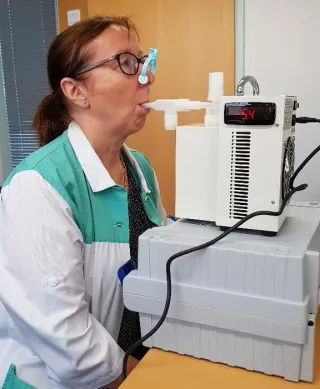HBM4EU – EU Biomonitoring Project


Data and methods
The Finnish Institute of Occupational Health is involved as a partner in a large EU project on biomonitoring of exposure to chemicals. The project is co-ordinated by the German Federal Environment Agency (UBA) and it is funded by the EU's Horizon 2020 programme.
The contribution of the Finnish Institute of Occupational Health is based on the long-term experience of the institution in determining the exposure of employees to urine or blood, i.e. biomonitoring of exposure.
Work packages
The Finnish Institute of Occupational Health is involved in most of the project's 16 work packages and it co-ordinates activities related to work-related exposure. In addition, the Finnish Institute of Occupational Health is leading two specific tasks in the project:
Task 5.3
Task 5.3. is related to the use of biomonitoring data in risk assessment. A scientific review of current practices has been published on this topic. The article can be found via the link below.
Guidelines on the use of biomonitoring in risk assessment are being prepared. These will be published in 2022.
Task 8.5
The Finnish Institute of Occupational Health co-ordinates the task of conducting targeted work-related exposure studies, which will be useful in EU-level decision-making processes.
The first of these is a study on exposure to hexavalent chromium carried out in nine different countries, including Finland. The aim was to
- collect information on exposure and
- test new study methods for the assessment of exposure to chromium. One of these is the analysis of exhaled chromium(VI) (see figure).
Information on the results of the chromium study in Finnish can be found on our website, as well as in English on HBM4EU's website. The results have also been published as a scientific publication. All the above mentioned articles and websites can be found via links below.
In addition, a similar study is currently being carried out on exposure to diisocyanate and the exposure of employees involved in handling waste electrical and electronic equipment. The results of these studies are expected to be available in the second half of 2022.





